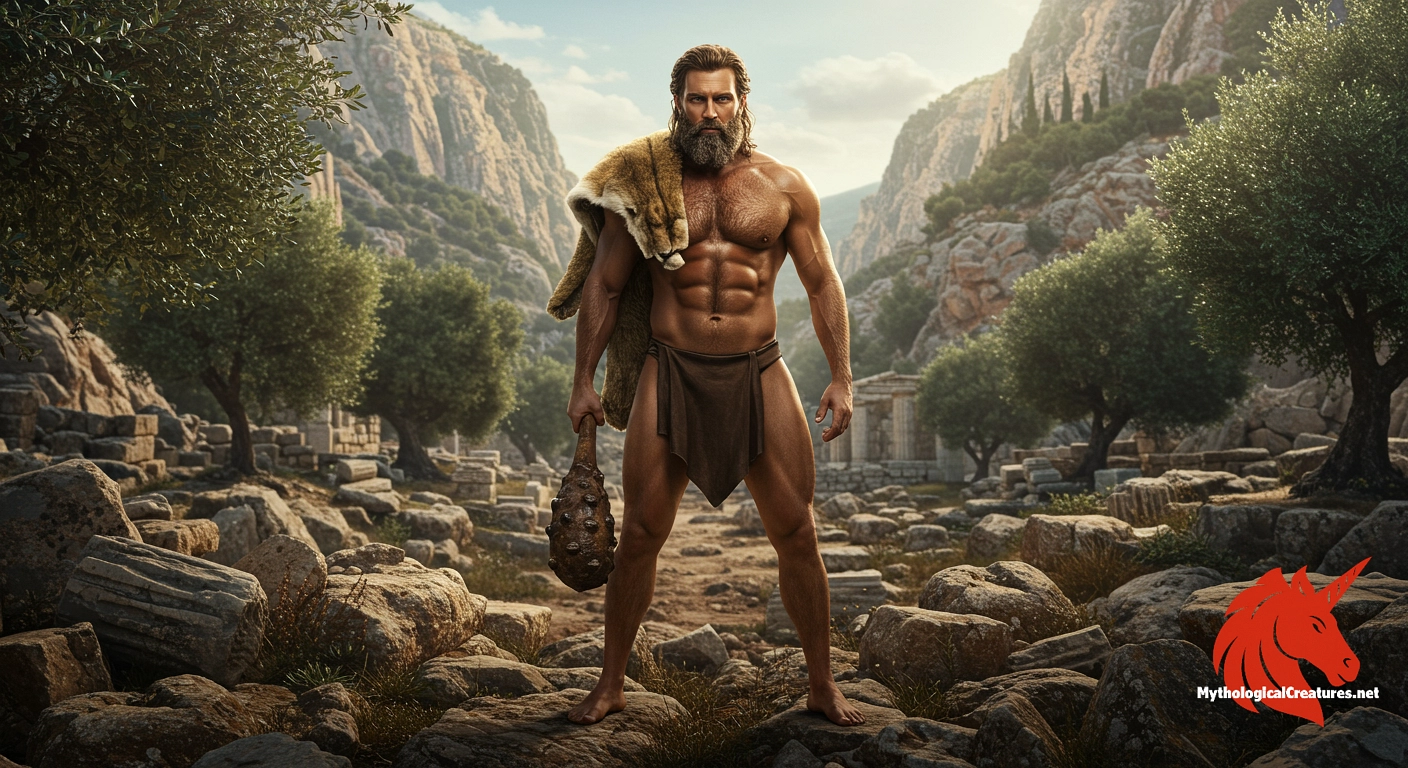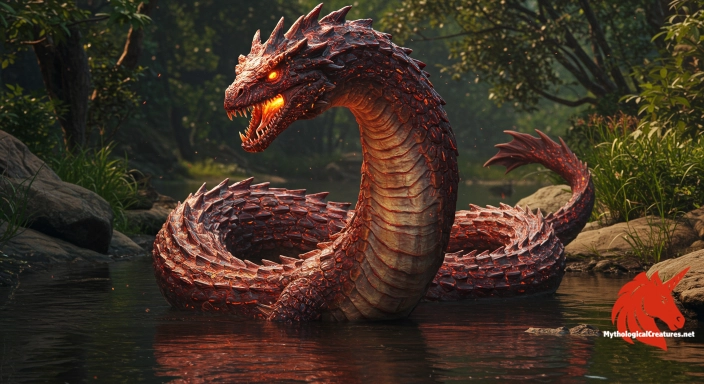Heracles: Heracles is a celebrated divine hero in Greek mythology, renowned for his superhuman strength and the completion of the Twelve Labours.

Heracles
Heracles - Heracles’ life and labours embody the struggle between mortal limitations and divine potential, establishing him as a timeless symbol of strength and perseverance.
Origins & First Encounters
Heracles, a central figure in ancient Greek lore, is celebrated not only for his extraordinary feats but also for the complexity of his divine and human origins. Born as Alcaeus or Alcides to Zeus and the mortal Alcmene, he bridges the realms of gods and men, capturing the imaginations of countless generations. His early mythic presence is documented in some of the earliest Greek literary traditions, where his trials and triumphs symbolise the eternal struggle between order and chaos. From the outset, his narrative reflects themes of redemption, transformation, and the resilient spirit required to overcome adversity. His legend was interwoven with cultural practices and communal identities in ancient Greece, often serving as an emblem of heroic virtue and perseverance. Over centuries, local iconographies and rites further enriched his story, cementing his reputation as the quintessential hero of antiquity. The interplay of divine intervention and mortal endeavour in his life helped establish him as a perennial symbol of strength and resilience. Even in his antiquity, his story resonated in both public festivals and private devotion, anchoring him firmly in the collective cultural memory.
Source Texts & Tale Variants
Ancient texts and diverse literary fragments form the backbone of Heracles’ storied past, providing a multifaceted view of his adventures. His narrative is scattered across poetic epics, scholastic compilations, and fragmented mythological accounts that have survived from the classical era. Early sources such as Hesiod’s works and later compilations by authors like Apollodorus offer a varied depiction of his labours and heroic escapades. Different regions embellished his myth to better reflect local values, resulting in multiple story variants that coexisted within the broader Greek tradition. These accounts often emphasise distinct episodes of his life, from his famed Twelve Labours to the more personal trials that underscored his human vulnerabilities. The literature surrounding his exploits also highlights the interplay between fate and free will, a theme that has intrigued storytellers and audiences alike. Oral traditions further contributed to this layered mythos, with each community adding its own nuances and interpretations. Over time, these diverse sources collectively shaped a rich narrative tapestry that not only recounted his mighty deeds but also invited continual reinterpretation and debate.
Form & Powers
Heracles is invariably portrayed as the embodiment of physical prowess, with a strong and well-muscled frame that conveys an almost superhuman quality. His robust anatomy, characterised by broad shoulders and a powerful build, is a visual metaphor for the immense challenges he overcame. Artistic representations frequently show him with a short, flowing beard and an intense gaze that hints at both his divine heritage and the weight of his labours. The iconic lion skin draped over his broad shoulders, taken after defeating the Nemean Lion, remains one of his most recognisable attributes. This emblem of victory serves not only as armour but also as a testament to his indomitable spirit. Sculptures and ancient vase paintings capture his dynamic posture, reflecting movement and readiness, as if he is perpetually on the brink of his next heroic deed. Variations in his physical depictions hint at a gradual evolution of his image—from the raw power of early representations to the more classical and idealised forms seen in later art. Despite these variations, every portrayal underlines the harmonious blend of mortal endurance and divine might inherent in his character.
Regional Faces
The myth of Heracles traversed regional boundaries, adapting and evolving to mirror the cultural and religious fabric of different communities. In mainland Greece, his stories were closely tied to local festivals and communal rites, each region emphasising specific aspects of his legendary labours. In Arcadia and Boeotia, for instance, his narrative was intertwined with local geography and ritualistic practices, reflecting the societal values and spiritual needs of those areas. Italy, too, reinterpreted his myth, where he was commonly known as Hercules and embraced as a symbol of martial prowess and the virtues of the Roman state. In these local adaptations, aspects such as his battle with the Nemean Lion or the purification rites tied to his labours were highlighted to serve regional identity and civic pride. Moreover, the artistic depictions and inscriptions found across the Mediterranean reveal subtle nuances that varied from one locale to another. These regional modifications underscore a shared cultural dialogue that, while rooted in the same core myth, allowed for a diverse spectrum of interpretations. By the coalescence of local traditions with pan-Hellenic ideals, Heracles’ myth became a dynamic emblem of universal heroism, uniquely tailored to the values of each community.
Cultural Parallels
Heracles’ robust legacy invites comparison with other mythological figures whose narratives encapsulate the universal struggle between the ordinary and the extraordinary. His journey, laden with both divine intervention and personal trial, mirrors the archetypal hero’s quest found in various traditions, such as the epic narratives of Gilgamesh and the adventures of King Arthur. Like these legendary figures, Heracles’ trials embody the timeless theme of overcoming obstacles that are both physical and moral. The duality of his nature, half-divine and half-mortal, finds echoes in other cultural heroes, allowing for a cross-mythological lens on the interplay between fate and free will. His extraordinary life, marked by miraculous labours and profound human suffering, serves as a paradigmatic example of growth through adversity—a motif familiar in many mythic traditions. Even within the Greek lexicon, his exploits are sometimes juxtaposed with those of Perseus, another hero whose narrative bridges the gap between extraordinary ability and personal vulnerability. Such comparisons deepen the understanding of how myth can articulate the human condition across cultural boundaries. Ultimately, Heracles’ myth becomes part of a broader dialogue among global heroic traditions, each echoing the shared quest for meaning and transcendence through struggle.
Legacy & Modern Evolution
The journey of Heracles from an ancient demi-god to a modern cultural icon reflects a storied evolution that spans millennia. In the Roman era, his transformation into Hercules saw the infusion of new values and iconographies, with emperors and statesmen alike adopting his image as a symbol of strength and authority. The Renaissance brought renewed artistic and literary vigour to his myth, as classical motifs were re-examined and celebrated in a spirit of revival and reinterpretation. His enduring legacy has transcended time, influencing everything from monumental sculptures and paintings to modern literature and cinema. Contemporary portrayals continue to reframe his myth, examining his labours as allegories for personal and societal transformation. His narrative, replete with both unbridled power and profound vulnerability, has become emblematic of the hero’s journey facing the challenges of a changing world. Modern reinterpretations often focus on the psychological complexities of his character, framing his exploits as a metaphorical exploration of human resilience. The adaptability of his myth demonstrates the timeless appeal of his story, ensuring that each generation finds new meaning in the trials and triumphs of Heracles. The evolution of his legacy, deeply embedded in both ancient and modern culture, continues to inspire and provoke reflection on the nature of heroism.
Interesting Fact
An intriguing aspect of Heracles’ myth is that even after attaining immortality, his deeply human flaws—such as his bouts of uncontrolled anger—continue to make his stories both relatable and profoundly inspiring.
Quick Creature Info
Origin:
Features:
Associations:
Our Mythic Legendary Rating:

Also Sometimes Known As:
Habitat:
Supernatural Powers:
Physical Attributes:
Abilities:
Behavior:
Weaknesses:
Lore:
References
Discover Another Mythical Legend You May Not Have Heard Of?
Uncover the mysteries of ancient folklore and expand your knowledge of legendary beings from cultures around the world.
Dare to Meet the Gaasyendietha....
Mythical Disclaimer: The images and data on this site are derived from various historical and literary sources, but we have found that many myths often have multiple versions and interpretations across references, sometimes contradictory. As a result, these creature depictions are artistic interpretations—imaginative blends of folklore, legend, and a dash of AI guesswork. Because creature descriptions vary widely, our illustrations and accompanying information represent our best effort to honor mythology while bridging creative gaps. Enjoy these interpretations—just remember, we've done our best to respect the stories and validate available data, but in the realm of mythology, details often shift, imagination leads the way, and nothing is ever set in stone!
Curated by the Mythological Creatures Team (rev. May 2025)
